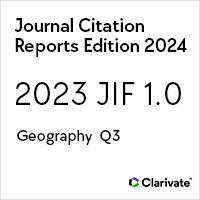Crisis financiera 2007-2009. Cómo la burbuja inmobiliaria, las cuestiones de transparencia y rendición de cuentas generaron y agravaron la crisis
Financial crisis 2007-2009. How real estate bubble and transparency and accountability issues generated and worsen the crisis
https://doi.org/10.21670/ref.2012.26.a08
Palabras clave:
sub–prime, burbuja inmobiliaria, títulos respaldados por hipotecas, conductos, riqueza y desigualdad de ingresosResumen
Este trabajo busca explicar algunos de los factores principales detrás de la crisis financiera de 2007–2009, con especial énfasis en la burbuja inmobiliaria, en la rendición de cuentas en el sistema financiero de Estados Unidos y en cómo estos dos factores generaron y empeoraron la crisis. La crisis financiera 2007–2009 inició con las hipotecas de alto riesgo del mercado inmobiliario, se extendió al sector financiero y, finalmente, al resto del mundo. Se dice que fue una crisis aun más grande que la Gran Depresión de 1929 y se le califica como única toda vez que no se conoce otra que haya impactado al mundo de esta manera. Este trabajo empírico pretende demostrar las causas que están en el corazón de la crisis y no han sido lo suficientemente discutidas.Abstract
This paper seeks to explain some main factors behind the Financial Crisis 2007–2009 with a special focus on the Real Estate Bubble and Transparency and Accountability Issues in US Financial System and how these two factors generated and worsen the crisis. Financial Crisis 2007–2009, which starts from the United States sub–prime mortgage market and spread to US financial sector and later on spread to the rest of world, is said to be an even bigger crisis than the Great Depression of 1929. This crisis is unique in this way and we haven’t seen such a bigger impact world wide from any other crisis. This paper would empirically prove the main causes which are right in the heart of the crisis and least discussedCitas
Baily Martin Neil, Robert E. Litan, and Matthew S. Johnson (2008), “The Origins of the Financial Crisis”, Brooking Institution, working paper no. 1519,
Case, Karl and Shiller (2003), “Is There a Bubble Housing Market?”, Brookings Papers on Economic Activity, no. 2, pp. 299-342. DOI: https://doi.org/10.1353/eca.2004.0004
Cecchetti Stephen (2008), “Monetary Policy and the Financial Crisis of 2007- 2008”, Journal of Economic Theory, no. 92, pp. 1-34.
Crotty James and Gerald Epstein (2008), “Proposals for Effectively Regulating the U.S. Financial System to Avoid Yet another Meltdown”, Economist, 15th January, 2008.
Dymyanyk Yuliya, Hemert (2008), “Understanding the Subprime Mortgage Crisis”, Financial Times, 11-02-2009. DOI: https://doi.org/10.2139/ssrn.1020396
Getter et al. (2007), “Financial Crisis? The Liquidity Crunch of August 2007”, National Bureau of Economic Research, working paper, no. 3927, Cambridge, Mass. Cambridge Press, pp. 1-38.
Green, Richard and Susan Wachter (2007), “The Housing Finance Revolution”, Paper presented at the Federal Reserve Bank of Kansas City Symposium.
Jaffee Dwight (2008), “The U.S. Subprime Mortgage Crisis: Issues Raised and Lessons Learned”, The Economist, 15-12-2009
Jason (2009), “A Decomposition Analysis of Regional Poverty in Russia”, Financial Times, 21-10-2008
Kregel, J. (2008), Minsky’s Cushions of Safety. Systemic Risk and the Crisis in the U.S. Subprime Mortgage Market, The Levy Economics Institute of Bard College, Public Policy Brief, no. 93, http://www.levy.org/pubs/ppb_93.pdf
Larson, Alan (2009), “Restoring Trust through Accountability, Transparency and Integrity: The Key Ingredient for Recovery”, Financial Times, 25-05-2009.
Magnus (2007), “Subprime Mortgage Lending and the Capital Markets” [Online], San Francisco, FRBSF. Available from: http://www.frbsf.org/publications/ economics/letter/2001/el2001-38.pdf [Accessed 23 July 2007].
McCauley (2008), “How ‘Credit Default Swaps’ —an Insurance against Bad Loans—Turned from a Smart Tet into a Killer”, News Week, September 27.
Minsky, H. P. (1986), The Financial Instability Hypothesis, The Levy Economics Institute of Working Paper no. 74.
Portes, R. and D. Vines (1997), Coping with Capital Inflows, Commonwealth Secretariat, London, Economic Paper no. 30.
Shostak, Anthony (2008), “Inequality Decomposition by Factor Components”, Econometrica, vol. 50, no. 1, Chicago, MIT-Press, pp. 193-211. DOI: https://doi.org/10.2307/1912537
Tatom, John (2008), “Two Pronged Assault on us Economy”, Daily Telegraph, 28- 12-2008.
Taylor, John B. (2008), Getting off Track: How Govt. Actions and Interventions Caused, Prolonged and Worsened the Financial Crisis, Hoover Institution Press, USA.
Whalen, C. (2008), “A Minsky Moment: Reflections on Hyman P. Minsky (1919- 1996)”, Journal of Economic Issues, vol. 42, no. 1. DOI: https://doi.org/10.1080/00213624.2008.11507125
Wolfson (1994), “The Aggregate Demand for Treasury Debt”, working paper, North-western University; (2008) Economics, vol. 9, no. 1, New Jersey, Blackwell Publishing, pp. 25-46.
Wray, R. L. (2008), “Financial Markets Meltdown. What can we Learn from Minsky?”, Public Policy Brief, no. 94, The Levy Economics of Bard College.
Publicado
Número
Sección
10.1007/978-3-031-49313-3_5
10.3846/bmee.2025.22663































